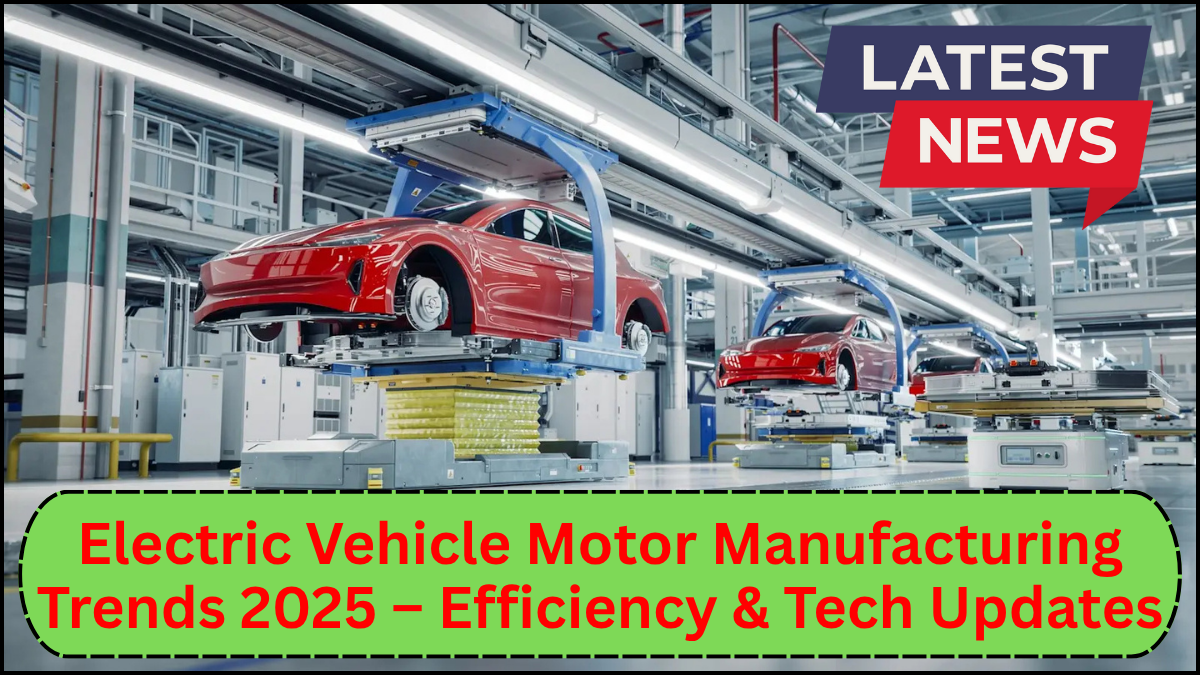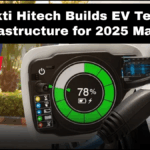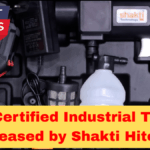The electric vehicle (EV) industry is entering a new phase in 2025, where innovation is not just about range and batteries but increasingly focused on the heart of the vehicle — the motor. As manufacturers race to improve performance, reduce costs, and scale production, electric vehicle motor manufacturing trends in 2025 reveal major shifts driven by efficiency improvements and cutting-edge technologies.

Smarter Materials for Lighter, Stronger Motors
One of the most notable trends is the adoption of advanced magnetic materials and lightweight composites. Rare-earth magnets are being optimized for higher thermal stability and magnetic strength, allowing for more compact and efficient motors. In parallel, research into rare-earth-free motors—such as those using ferrite or switched reluctance designs—is gaining traction, driven by supply chain concerns and sustainability goals.
Aluminum and carbon-fiber-based enclosures are replacing heavier steel components, trimming weight and improving energy efficiency. This material innovation is essential to meet the increasing demand for lighter EVs with faster acceleration and better range.
Integrated Motor and Inverter Systems
EV manufacturers are shifting toward integrated drive units that combine the motor, inverter, and transmission into a single, compact module. This integration reduces energy losses, simplifies production, and shrinks the overall drivetrain footprint. By optimizing thermal management across the entire system, manufacturers can achieve higher continuous power output without overheating.
Tesla, for example, continues to push boundaries with its proprietary motor-inverter integration, inspiring a wave of innovation across the industry. Expect more EV makers to follow suit in 2025, improving both performance and production efficiency.
Scaling Production with Automation and AI
The race to meet surging global demand has sparked a revolution in EV motor tech and production updates. Factories are increasingly relying on AI-powered quality control systems and robotics for winding stator coils, applying insulation, and assembling rotors with micron-level precision.
Advanced automation not only speeds up the process but ensures consistency and reduces defects. AI algorithms analyze data from every stage of motor production, predicting failures and optimizing performance parameters in real-time. This is especially crucial as motor designs become more complex and customized across vehicle models.
Modular and Customizable Motor Platforms
To cater to diverse vehicle segments—from compact city cars to electric trucks—OEMs are embracing modular motor designs. These platforms allow manufacturers to configure motors for specific torque, speed, and performance requirements without reinventing the wheel for every model.
Companies like Bosch and Nidec are pioneering scalable EV motor architectures that can be adapted across a wide range of vehicles. This flexibility not only cuts down on R&D time but also reduces tooling costs and accelerates time to market.
Thermal Management Breakthroughs
With motors operating at increasingly high power densities, efficient thermal management has become a top priority. Liquid cooling systems are replacing traditional air-cooled setups, especially in high-performance EVs. Some manufacturers are even integrating cooling channels directly into the motor casing to dissipate heat more effectively.
In 2025, expect further advances in phase-change materials and nanofluid-based coolants, which promise superior heat absorption and transfer rates. Improved thermal control translates into more reliable motors that maintain peak performance under extreme conditions.
Software-Defined Motors
As EVs evolve into software-centric machines, motor performance is increasingly defined by code. Through motor control algorithms, engineers can fine-tune torque delivery, regenerative braking, and energy efficiency. Over-the-air updates now enable real-time performance improvements and diagnostics.
In the coming year, expect a surge in software-defined motor innovation, where AI dynamically adjusts motor behavior based on driving conditions, terrain, and battery state. This software layer adds an unprecedented level of adaptability and optimization to the hardware.
FAQs
Q1: What are the most significant electric vehicle motor manufacturing trends in 2025?
A: Key trends include advanced materials for efficiency, integrated motor-inverter systems, AI-driven production, modular platforms, and enhanced thermal management systems.
Q2: How is AI changing EV motor manufacturing?
A: AI improves quality control, predicts component failures, and optimizes motor performance. It’s also used in predictive maintenance and real-time production adjustments.
Q3: Why is integration of motor and inverter important?
A: Integration reduces energy loss, simplifies the drivetrain, improves cooling, and enables higher power density, resulting in more efficient and compact EV systems.
Q4: What role does thermal management play in motor design?
A: Effective thermal management is critical to prevent overheating, maintain motor efficiency, and ensure long-term durability, especially in high-performance EVs.
Q5: Are manufacturers moving away from rare-earth magnets?
A: Yes, there’s a growing push toward rare-earth-free motors due to cost, environmental impact, and supply chain risks. Alternatives like ferrite and switched reluctance motors are gaining momentum.
click here to learn more



